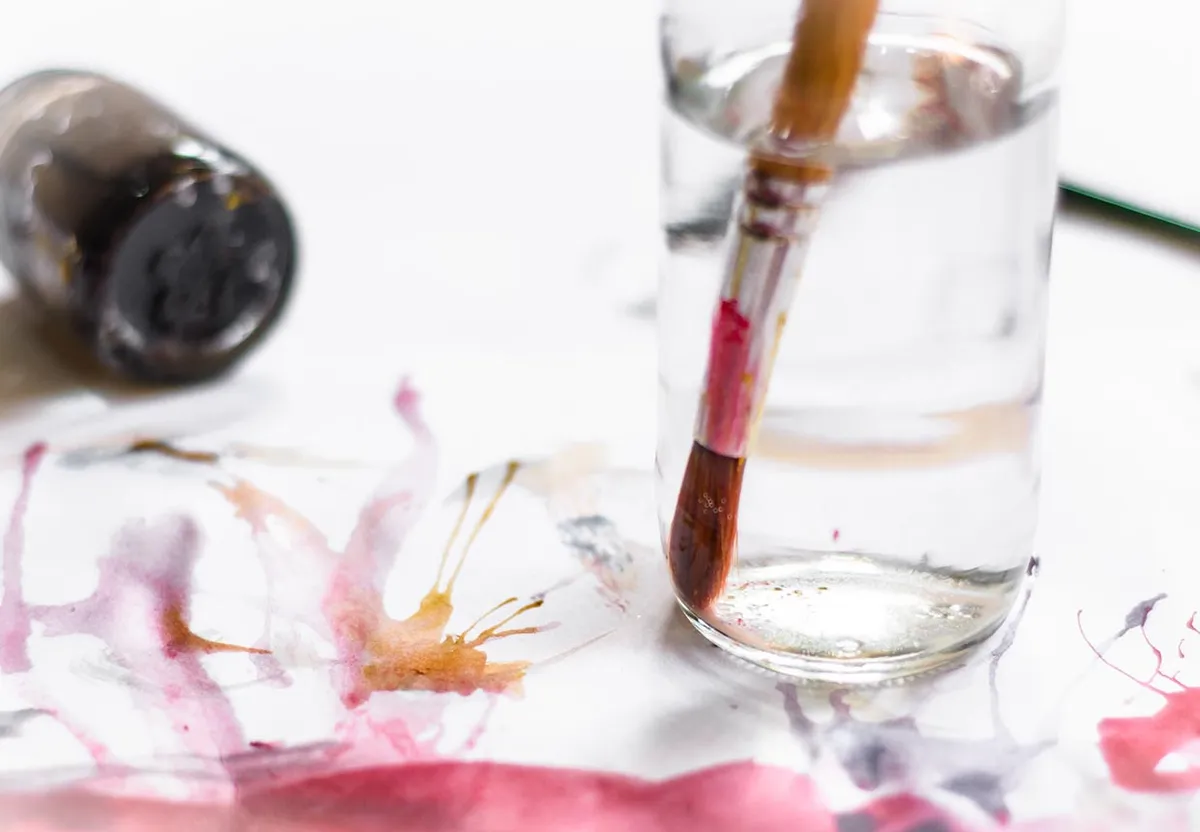Watercolor is a fantastic medium to use if you're new to painting. It's one of the most accessible and portable forms of painting and even beginners can produce beautiful images with a little practice.
You can use watercolor paints to create quick sketches or take your time to paint more detailed designs, such as botanical paintings. Once you start using them, you'll quickly develop your own style and be able to paint your own unique pictures.
Use watercolor paints for luminous, slightly translucent paintings. If you're looking for flat and opaque colors, you'd be better off opting for acrylic paints or gouache which can be used to create bold, graphical paintings. Watercolor paints can also be used effectively in combination with other mediums, such as pencils and other types of paint.
Watercolor painting is an extremely relaxing way to spend an afternoon. You'll be surprised how calm you feel after a painting session! Painting is a mindful activity and it's very difficult to worry about anything else while you're focused on your painting.
Read on to explore our guide to watercolor painting for beginners or follow the links below to jump to a section:
- Can you teach yourself watercolor?
- Is watercolor good for beginners?
- Which is the best watercolor paint for beginners?
- How do you start a watercolor painting?
- Do you use dark or light colors when watercoloring?
- How to use watercolor pencils for beginners
- Essential watercolor supplies
- Watercolor techniques for beginners
- Dos and don'ts of watercolor painting for beginners
Watercolor for beginners
Can you teach yourself watercolor?
Yes, you can! There are a huge number of video tutorials available online, as well as online watercolor classes if you don’t have time to take a course in person.
If you’re not a fan of staring at screens, you can always try an art book instead. Art books are an incredibly useful resource, because they often go into more technical detail than a video tutorial and contain invaluable tips and advice.
We’d particularly recommend Watercolour Techniques for Artists and Illustrators, which is published by DK.
Is watercolor good for beginners?
Yes, watercolor is very satisfying for beginners. You can learn to produce amazing works of art very quickly and your skills will only grow and develop with practice.
The main downside of watercolor painting is that it’s difficult to correct mistakes, because you can’t simply paint over the top as you would with acrylic paints.
Which is the best watercolor paint for beginners?
When you’re buying watercolor paints, look for a reputable brand such as Winsor & Newton or Faber Castell. These art supply manufacturers are known to produce good quality paints and you’ll be very pleased with the vibrancy of the colors. Keep an eye out for ranges aimed at students, as these are usually excellent value for money.
While it’s possible to buy watercolor paints extremely cheaply, you're likely to end up disappointed with the colors and the consistency of the paints.
How do you start a watercolor painting?
When you’re new to watercolor painting, it’s a good idea to start with a relatively basic painting project to practise your technique.
Watercolor painting is an enjoyable and relaxing pastime, but it’s not always simple to decide what to paint!
We’ve found lots of inspiring painting projects to help you find your next theme. Take a look at our easy watercolor ideas and start painting right away.
Do you use dark or light colours when watercoloring?
Most artists recommend working from light to dark when you’re using watercolor paints. This is due to the translucent quality of the paint – darker colors will shine through if you paint over the top.
As you progress as a watercolor painter, you’ll develop an instinct for which areas to leave white and which parts to tint with a thin wash of color. With watercolor paints, less is more!
How to use watercolor pencils for beginners
Watercolor pencils are perfect for beginners, because they combine the best parts of drawing and painting. You can sketch and shade if you like, or blend tones together with a wet brush to turn it into a painting.
Learn how to use watercolor pencils with our easy guide.
Watercolor painting for beginners: essential supplies
Watercolor paints

Watercolor paints are made using pigment and a binding agent such as gum arabic. When mixed with a little water, they can be used to make luminous, translucent paintings.
Watercolor paints are available in sets and can be bought very cheaply. Alternatively, you can buy watercolor paint in tubes from some suppliers. If you take care of your watercolor paints, they will last you a really long time so if you decide to invest in a more expensive set then you will definitely get good value for money.
This mini watercolor set from Winsor and Newton is ideal for beginners. It’s compact enough to take out with you on the go and the colors are richly pigmented. The paints are protected by a sturdy case and it even comes with a tiny brush!
You can find even more watercolor paints to buy in our best watercolor paints guide.
Watercolor paper
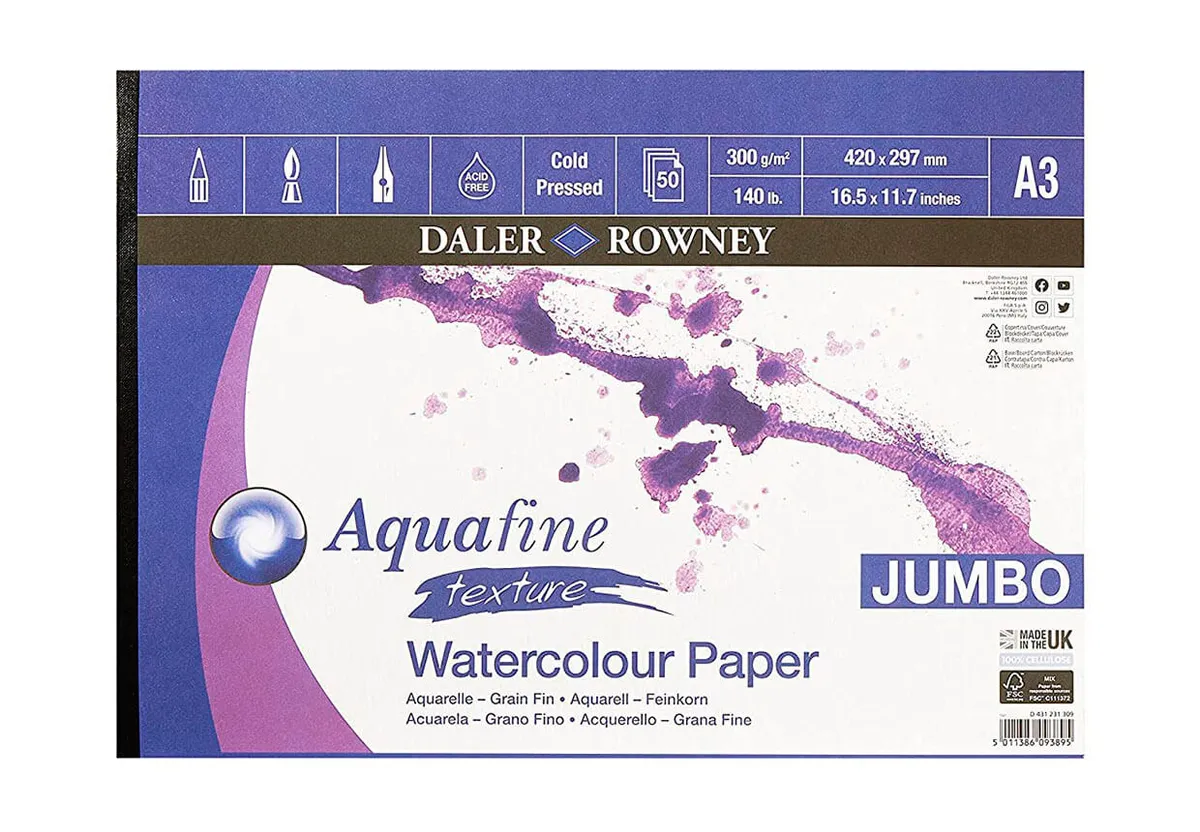
Watercolor paper is thicker than other kinds of artists' paper because it needs to be able to absorb a lot of water and pigment. You can use cartridge paper when you get started, but you may find that your paper buckles and warps if you use too much water.
You'll achieve much better results if you choose a pad of watercolor paper instead. There are three types of watercolor paper: hot-pressed paper (HP), cold-pressed paper (referred to as CP or NOT, meaning that it is not hot pressed) and rough.
Use HP paper for more detailed watercolor paintings, CP for most styles of watercolor painting and rough paper for less detailed work such as landscapes.
This watercolor pad is produced by Daler Rowney, which is a great brand to look out for when you’re trying to decide what paper to buy. This pad is cold pressed, but they do sell hot pressed watercolor paper as well.
Check out our watercolor paper guide for more pads to buy.
Watercolor brushes
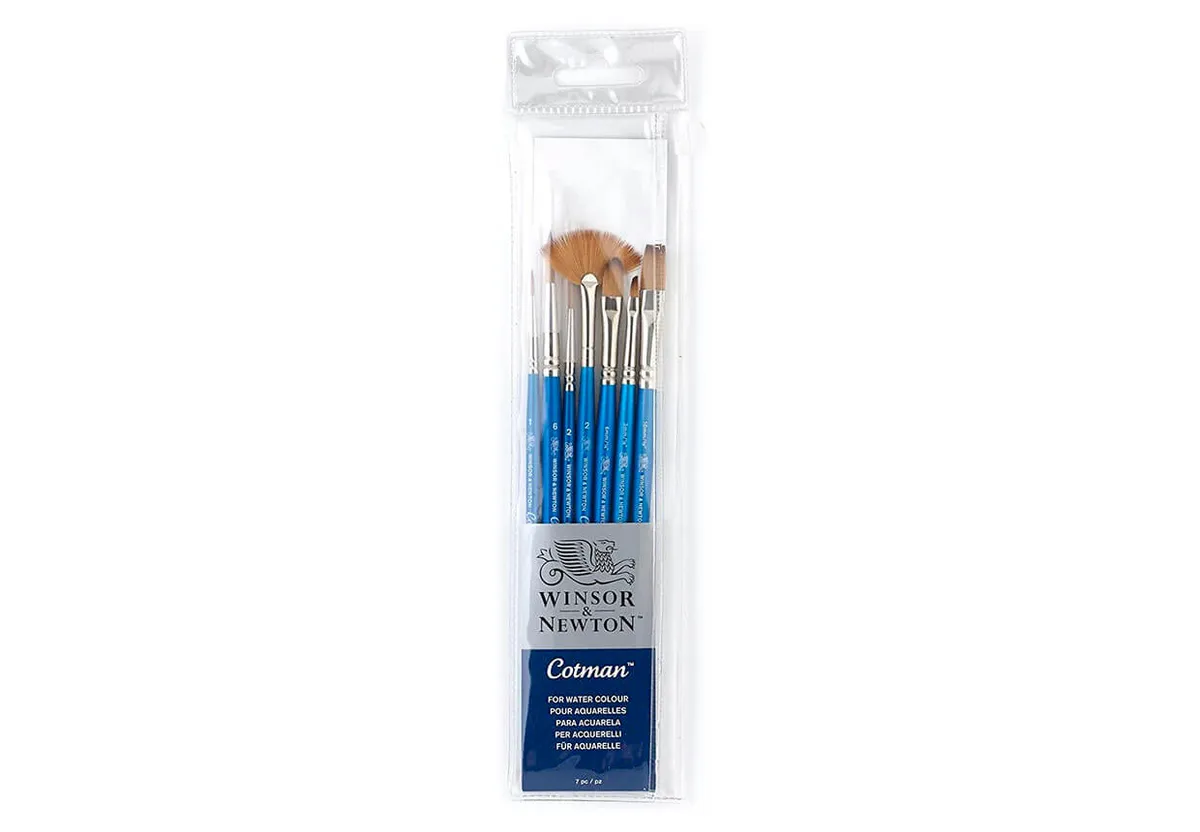
Watercolor brushes are designed to allow your paint to flow smoothly onto your paper. They should spring back into shape after each stroke and keep a nice point.
Paintbrushes are traditionally made using horse hair, but today you can buy synthetic brushes that are just as good.
Take care of your brushes by washing and drying them after use – never leave them standing up in water because they can bend. If they come with a case, store them in that to help protect the bristles – especially if you're planning to take your paints out and about with you.
This set of watercolor brushes by Winsor & Newton is a good choice for beginners, because it includes a variety of brush shapes for you to experiment with. This set will be suitable for most painting projects that you want to try, but it’s always worth getting a fine brush for more intricate work.
8 watercolor techniques for beginners
If you're new to watercolor painting, it's a good idea to start with some simple watercolor techniques for beginners. These basic foundation skills will allow you to start creating beautiful artworks straight away.
If you enjoy using these tips, you might also like our watercolor techniques guide, which has even more ideas for you to try.
1. Wash
A wash can be used to either fill a large space on your painting or to create a light background.
To create your wash, wet a large brush and sweep it over your watercolor paper, then brush your chosen color on top of it. Allow it to dry before adding your next color, unless you want it to bleed into the background. Be careful not to use too much water or your paper will warp.
You can bring your brush across the page in one direction to create a textured look (this is great if you're painting a landscape as it can give the look of a cloudy sky). Alternatively, paint in both horizontal or vertical lines for a flatter, more even effect.
2. Wet on wet
As the name suggests, wet on wet involves painting on top of an already wet layer of paper or an area that has already been painted but hasn't been allowed to dry. This can be used to create some really interesting effects!
Play around with it and see what you can do with this fun technique. It can be very effective to let one color run into another. Or simply add a drop of color and watch it spread across the paper.
3. Wet on dry
Wet on dry can refer to painting directly onto a dry piece of paper or painting over a section of your painting that has already dried. Use this technique to create more precise paintings and clean lines.
4. Building up color
You can make darker or more intense shades by layering up your colors when each layer is dry. This is a great way to layer shadows on top of paint that has already dried.
5. Creating a gradient
First, wet the area that you want to paint. Add your first color at one end, then draw it towards the middle using your paintbrush.
Wash your brush, then add the second color at the opposite and move it gradually towards the centre until it mixes with your first color. This is a quick and easy way to add a gradient to your painting.
6. Painting details
If you want to keep areas of your painting separate, it can be a good idea to paint around the edges first with a smaller brush before painting a larger area (such as a background). Make sure the area you are painting around has dried before you start to paint the second color.
It's a good idea to have at least one fine paintbrush to allow you to add detail or paint more delicate parts of your watercolor painting.
7. Splattering paint
Splattering paint is a great exercise to try with kids! Just make sure you put down some newspaper first.
Put some paint on your brush and flick it towards your painting in an uncontrolled way, or flick the end of your brush using your finger for a more subtle effect. This can be a great way to add some interesting texture to your painting.
Try splattering some paint on a page and drawing a shape around it when dry to create a quirky drawing. This is used to great effect by the artists Peng and Hu who created the book Hirameki: Draw What You See.
8. Masking fluid
Masking fluid can be used if you want to keep any sections of your picture white or to protect a section while you paint another color over the top. This technique has been used very effectively in Esther Curtis' watercolor pebbles project.
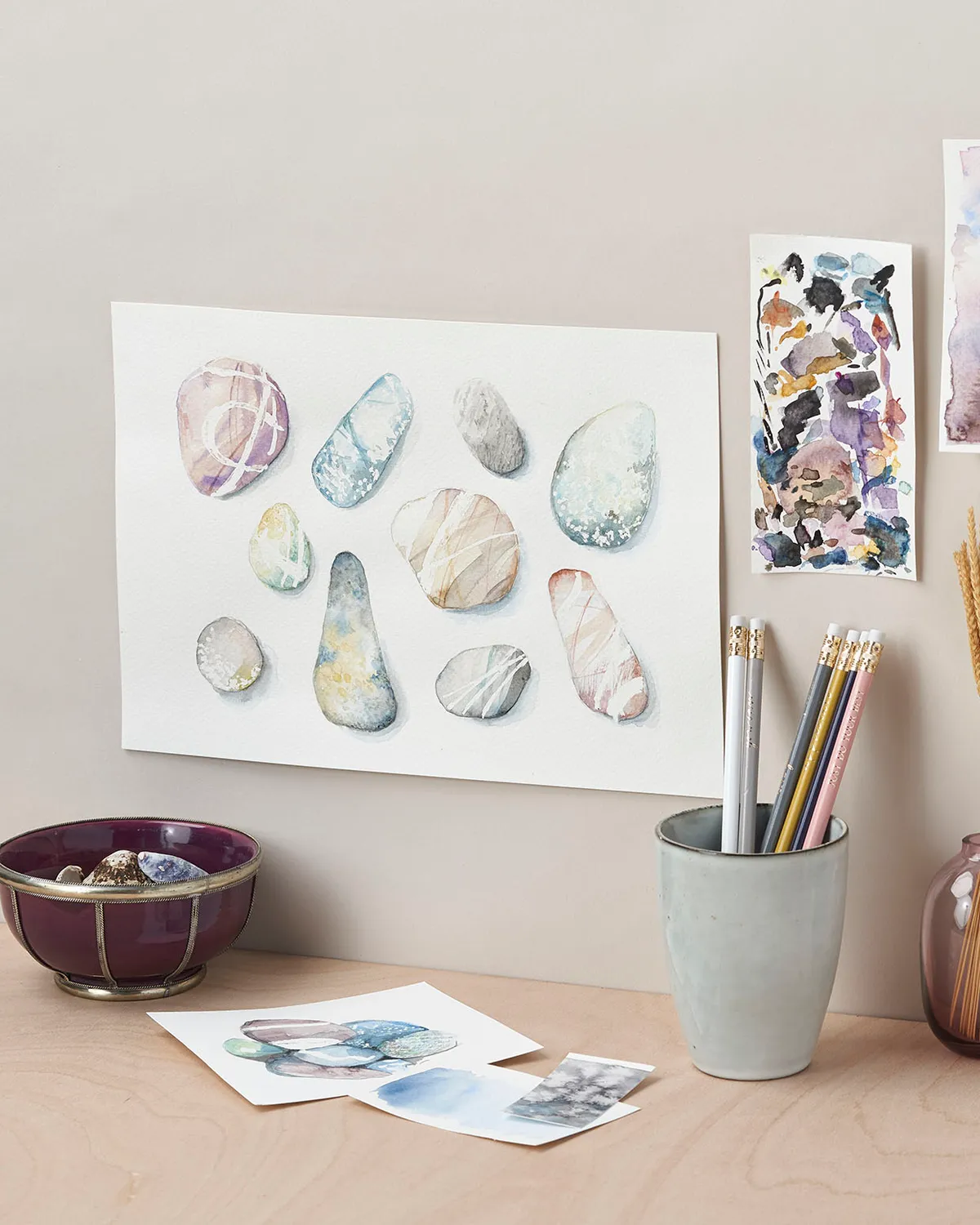
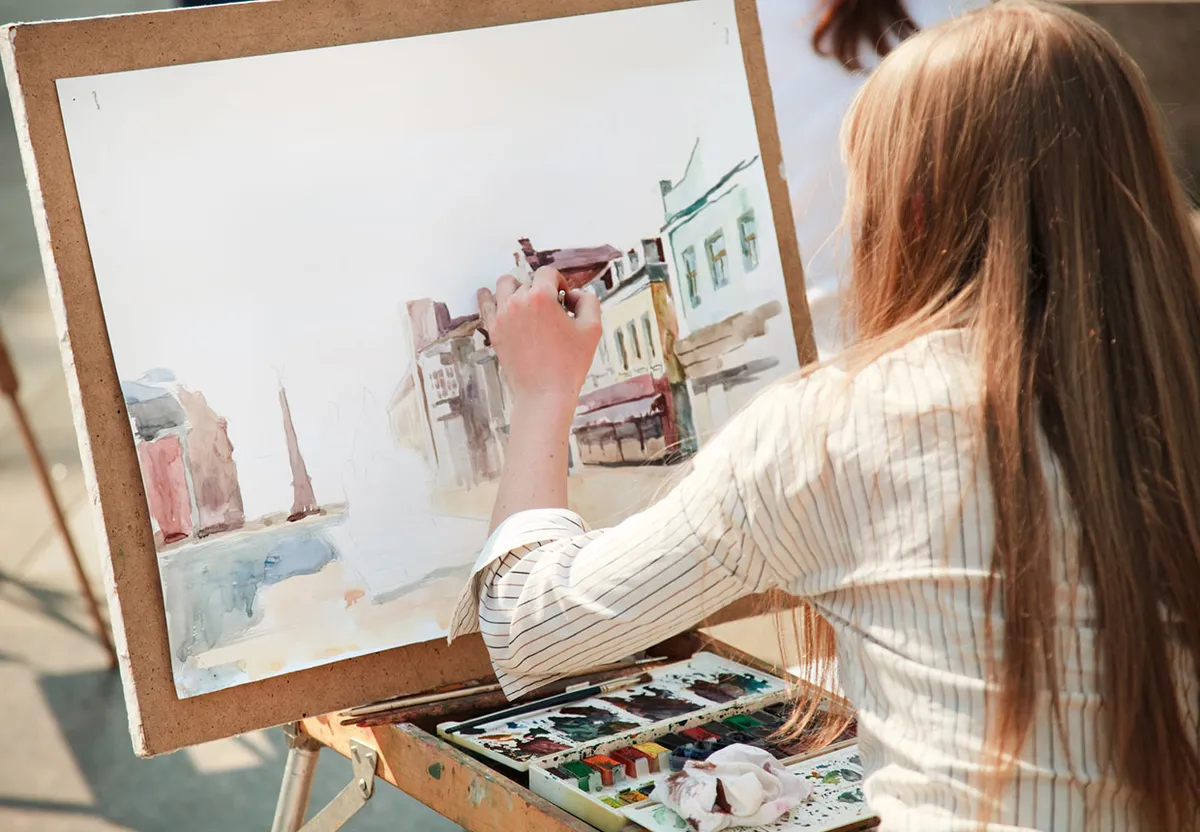
Your complete guide to watercolor painting
Watercolor is a complex but extremely versatile medium. Learn everything you need know about paints, paper and more with our in-depth watercolor painting guide.
Dos and don’ts of watercolor painting for beginners
Before you try out our watercolor techniques for beginners, you might find these top tips helpful:
1. Do keep your watercolor paint set clean
Make sure your brushes are clean whenever you switch between colors or your watercolor paints will get grubby. After you’ve cleaned the brushes in water, you can also wipe them on some paper or kitchen towel to dry them and remove any remaining paint.
2. Use white gouache for bright highlights
Want to add highlights to a dark area of your painting? It's useful to have a tube of white gouache to hand for lighter details. Use it neat or blend it with your watercolor paints for stunning results.
3. Don't use too much water
Yes, water is essential for watercolor painting but if you use too much then your paper will become bumpy. This is often called buckling or warping.
If the painting is small enough, then place a piece of paper over your painting to protect it once it has dried and pile some heavy books on top.
However, the easiest way to avoid this is to be careful with the amount of water you add in the first place. Alternatively, you can use a technique called pre-stretching to prevent buckling.
This video from Blick Art Materials explains the process very well:
4. Keep kitchen towel or paper towels on hand
Sometimes you'll add water to the paper and will instantly realise that you've made it too wet. Keep some kitchen towel or paper towels on hand to gently soak away the excess water when this happens. You can also rub the paint using some kitchen towel to add a rougher texture.
5. Don’t forget to change your water regularly
If you're using lots of different colors, your water can quickly become cloudy and dark. If you use dirty water when painting lighter shades then your colors won't turn out as you want them to look. Make sure you change your water frequently while you're painting and give the jar a good rinse too.
6. Keep colors separate
If you're painting two different colors next to each other and want to keep them separate, wait for your first color to completely dry. If you don’t your next color will run into the first.
7. Make a test sheet
If you've bought a large watercolor set, it can be a good idea to make a watercolor test sheet.
Take a sheet of watercolor paper and paint a small square in each color. Now write a note next to each color so you can identify the pan or tube in your set.
This will allow you to find the shade you want to use for your painting quickly. It’ll also give you a good idea of what the paint will look like when it's dry.

8. Use masking tape to create a border
Taping around the edge of a piece of paper can allow you to create a clean border on your painting, just be careful not to let it get too wet. Peel it away once the paint is dry to reveal a clean edge around your painting.
Get into watercolor painting with our beginners guide
Watercolor painting is a brilliant choice for anyone who wants to take up painting, but doesn’t know where to begin.
It’s a convenient medium and one of the most accessible forms of painting – you can buy affordable, good quality paint sets in most art or craft shops.
One of the joys of watercolor painting is that even beginners can produce striking works of art in a relatively short time.
Watercolor paint is also very versatile and can be used to paint everything from sweeping landscapes to delicate flowers. You can sketch with them on the go, or spend time creating richly detailed art.
This type of painting is wonderfully relaxing too. You’ll soon find that you want to spend your weekends chilling out with your new favourite hobby!
Learn how to paint with an online watercolor class
Boost your skills and improve your painting technique by signing up for an online watercolor class.
There are lots of fantastic painting courses which you can fit in whenever you have a free moment, so it’s much more convenient than signing up for an evening class.
Explore Gathered’s pick of the best online watercolor classes.
